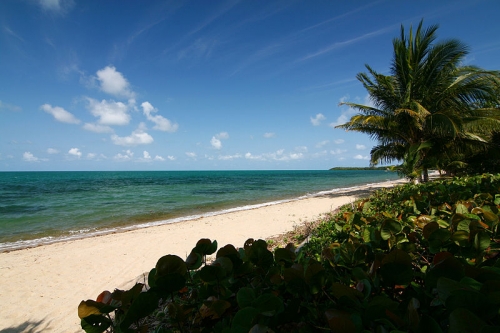Belize, a Central American country situated to the north of Honduras and the south of Mexico’s Yucatan Peninsula, has a small population amounting to fewer than 300,000 people. It is among the least populated nations in the region.In spite of its small size, Belize displays great diversity in its landscape. The northern interior territory is a flat region where most of Belize’s sugarcane is produced. The Belize Barrier Reef lies along the entire Belize coastline spanning about 185 miles. It is the second largest barrier reef in the world after the Great Barrier Reef located in the Coral Sea near Australia. Belize’s barrier reef is located about 10 to 40 miles offshore and there are more than 200 small islands within the reef’s barrier.
Almost 70 percent of the country is covered by forest. The Belize government protects most of the rainforest and tropical jungle. Belize has a subtropical climate with the dry season lasting from November to May and the wet season from June to October. Rainfall is mainly in the southern regions.
Expats will find that in Belize they will be able to live more comfortably as their money goes further. Things like basic medical care, insurance, food and property taxes are considerably more economical. However, electricity, internet access, gasoline and telephone bills tend to be more expensive. Housing can be quite cheap when compared to your home country. Both buying and renting are economical and expats may even be able to afford Belize’s upscale condominiums on the beach.
Another advantage of living in Belize is that the official spoken language is English. Spanish is also commonly spoken, but most Belizeans tend to be bilingual. Expats will find that official documents, menus and street signs are mainly in English. This makes things like ordering food, asking for directions and shopping easy for expats.
Living in Belize can even improve your health. There is plenty of fresh healthy produce available in the country. You can live on a diet of fresh, unprocessed food that is commonly available in the local shops. There are designated market days in most towns where fresh, seasonal food is in plenty. Belize has an ample supply of wide-open spaces that enable you to walk more and drive less. Spending time outdoors is a treat with the fresh, unpolluted air. Belize has a laidback lifestyle and it is possible to take a midday siesta most days.
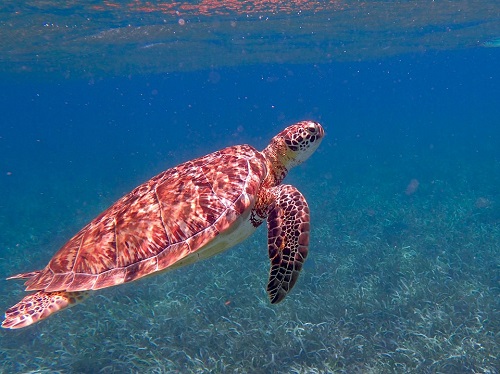
There are also plenty of things to see and do in Belize. The country’s lush diverse landscapes are great places to explore. Belize is a natural treasure trove with its many species of birds, animals, fish, butterflies, flowers and trees. If you’re on a budget, take advantage of the specials during the off-season. Another advantage, especially for expats from the United States, is that the US dollar is accepted in Belize.
The local population are fun-loving and love to celebrate. There are fifteen official holidays in Belize and a long Easter holiday that’s almost a five-day vacation. The pace of life in Belize is relaxed and while this may not be the most efficient use of time, it is ideal for those who want a laidback lifestyle. Expats may take a while to get accustomed to this.
Since Belize was a former United Kingdom colony, the local law is based on British Common Law similar to that in Canada and the US. However, it must be mentioned that the local legal system has its flaws and lawyers do not come cheap. But the good thing is that foreigners enjoy the same property rights as the locals according to the Belize Constitution. Foreigners who want to own land will not face any restrictions in any part of the country.
Belize has a variety of diverse geographical regions that are as rich in number as its many languages, ethnic communities and cultures. Here is our guide to the different regions of Belize.
Belize City
Belize City, located near the mouth of the Belize River, is a coastal port that is modest in size. The main part of the city is divided into north and south sides. The north side is generally considered to be more prosperous and safer.
Belize City used to be the official government seat, and still retains its importance. It is an economic, historic and cultural hub. It is also an important center for transportation as the only international airport in the country is located here. It also has a functioning municipal airport and a dock for cruise ships. The main bus lines and water taxi terminals are also centered in Belize City.
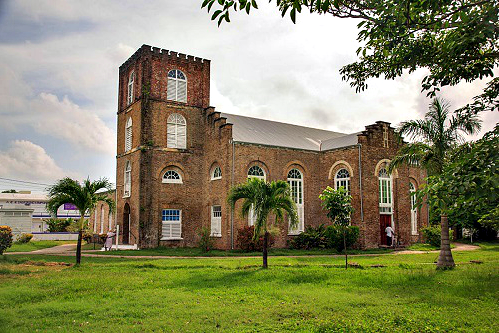
Since Belize City is largely an urban center, it is devoid of the Caribbean beaches and coastal shacks that most people associate with Belize. But it remains the historical capital of the country and it is worth a visit.
The Belize Zoo is one of its main attractions. It houses only rescued animals, native to the city, and the animals roam through the wide enclosures that are fashioned after natural habitats. Another interesting stop is the museum, which is a great place to go if you’re interested in Belize’s history and culture. Expats may also want to check out St. John’s Cathedral, Central America’s oldest Anglican Church. A trip to Belize City is incomplete without a visit to the Government House, one of the most preserved colonial structures.
The Northern Cayes & Atolls
The cayes, pronounced ‘keys’, and atolls are Belize’s main tourist hotspot. The cayes are a collection of islands located along the expanse of the Belize Barrier Reef. The waters around the cayes are brilliantly clear and turquoise. There are hundreds of these offshore islands located between the mainland coast and the Belize Barrier Reef. The reef can be seen from any of the cayes and the area is known for some of the best scuba diving, snorkeling and fishing. There are plenty of resorts and hotels on some of the more developed cayes such as Caye Caulker and Ambergris Caye.
The area also has a couple of open-ocean atolls, namely Lighthouse Reef Atoll and Turneffe Island Atoll. The cayes are serene islands in the pristine waters of the sea as the reef protects them from the open ocean. Some of the other main attractions in the cayes are sunbathing and fishing. It’s also a great place to take a leisurely stroll. The cayes are small enough that one can walk from end to end in just under twenty minutes. Belize appeared on the diving map in 1971, when Jacques Cousteau explored the Blue Hole.
Caye Caulker is located 35km northeast of Belize City and is a marine reserve, ideal for all kinds of watersports. It is an affordable island and it is possible to find economical accommodation here. The island’s main income source used to be lobster fishing, but today it has become a thriving tourist destination. Caye Caulker is approximately 8km in length with a settlement at the southern end. The northernmost part is the Caye Caulker Forest Reserve established to protect the caye litoral forest, which is a rare habitat in Belize.
The largest of the cayes is Ambergis caye, which is around 40km long and is the most northerly island. San Pedro, once a fishing village, forms the main attraction. It is a small town with a population of above 9000. The caye has recently undergone considerable development and this has tarnished much of its Caribbean character. However, it is still has some of the best restaurants and bars in Belize. For a budget destination, head to San Pedro or stay on the island of Caye Caulker and do a day trip to Ambergis caye.
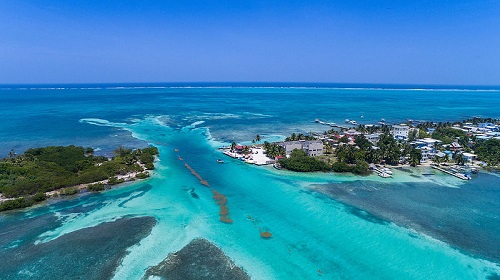
Turneffe Island is a nearly uninhabited island, 40km from Belize City. The long-lying mangroves which make up the island are surrounded by an attractive coral reef.
The outermost atoll, approximately 80km east of Belize City, is the Lighthouse Reef, the abode of the Blue Hole and Half Moon Caye Natural Monument. The Blue Hole is a large submarine sinkhole at the middle of the Lighthouse Reef. It is more than 300m in diameter and opens out in a connection of caves and crevices.
Southern Belize
There are two main districts in Southern Belize: Stann Creek and Toledo, both of which have been increasing in popularity among visitors. This can be attributed to the diverse tourist experiences they offer such as the spectacular white beaches of Placencia, the Maya Mountains, the rich jungles of the Cockscomb Basin Jaguar Preserve. There is also the art, music, food and culture of the Garifuna peoples. The hub of the Garifuna culture is Dangriga, while Placencia is known for its beaches.
The Toledo district lies further south. Mayan villages can be found in the inland hills and jungles. One can also discover some ancient Mayan ruins hidden in the hills, such as Nim Li Punit and Lubaantun. The Toledo District is also an important ecotourism destination with the country’s most lush rainforests. Off the coastline of Southern Belize, there are more cayes and a mid-ocean atoll called Glover’s Reef Atoll. The cayes in this part are perfect for those who want to witness the attractions of the cayes, but away from the huge crowds.
Northern Belize
Northern Belize is the agricultural and business center of the country. Further north are Orange Walk Town and Corozal Town, cities that display a Spanish character. The Maya have also called these areas home and their influence is evident in the ruins of the archaeological sites of Cerros, Altun Ha and Lamanai. The land here is mostly mangrove and swamp as it was once under the water level.
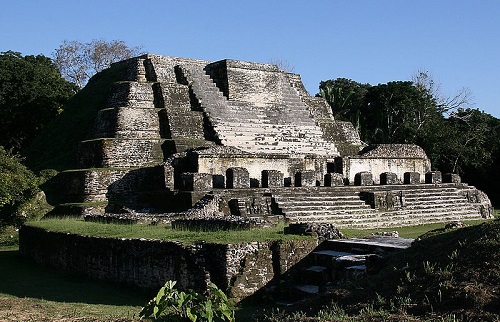
In areas where the land is cleared and where there are settlements, the main source of income is sugarcane, although citrus fruits, bananas and pineapples are also grown. In the western part of this region is the Rio Bravo Conservation Area, an expansive band of virgin forest. It also has sustainable-yield forest and areas that are being reforested. Some of the best nature lodges in the country are located in Northern Belize. The area is also an ideal location for bird watching.
The Cayo District & Western Belize
Another of Belize’s popular destinations is this mountainous terrain that lies near the border of Guatemala. It features some of the best countryside scenery and natural sights. It has limestone mountains that are riddled with caves, peaks, underground rivers, sinkholes and waterfalls. The rivers that flow above ground are ideal for canoeing and swimming. There are also acres of virgin forest with plenty of different bird species and wild animals. The Cayo District is the place to be for those who love nature. Belize’s largest Mayan ruins are also located here, in the Mountain Pine Ridge part of the Cayo District. Caracol is among the largest Maya cities to ever have been discovered.
Tikal & Guatemala's Peten
A little past the western border of Belize is the Peten province, a large expanse of forest and one of the Mesoamerica’s most stunning Mayan ruins, Tikal. Tikal clearly constitutes one of the wonders of the world and it is well preserved and restored. The rest of the land is jungle and small villages that are perfect for visiting once you’ve explored mainland Belize.
Have you lived in Belize? Share your experiences in the comments below, or answer the questions here to be featured in an interview!

